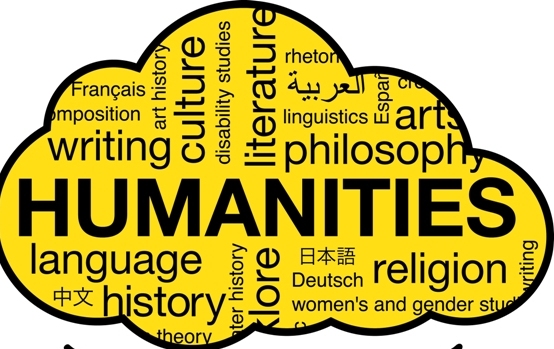Although a 2019 piece , the subject matter has gained currency to warrant bringing it up at this point in time

The author
By Adam Kirsch
Colleges across America are beginning to prepare for graduation season, but in some corners of campus, you’re more likely to hear sounds of dread than of celebration. These are the humanities departments—English, history, philosophy, classics and others—where enrollments have dropped precipitously since the financial crisis of 2008. “This wasn’t a gradual decline; it was more like a tidal wave,” as the president of Macalester College, Brian C. Rosenberg, told the Atlantic last fall. At the University of Wisconsin–Madison, for instance, the number of students graduating with humanities degrees fell from 1,830 in 2008 to 1,025 in 2016. Nationwide, according to the National Center for Education Statistics, English departments have lost some 20% of their majors over the last 10 years. Meanwhile, students are flocking to STEM subjects: At the University of Pennsylvania, the number of students majoring in biology went up 25% between 2005 and 2014.
These trends started to spark alarm around five years ago, when observers began to talk about the “death,” “decline” or “crisis” of the humanities. Since then, alarm has turned into something more like panic. “Who is going to save the humanities?” wondered Michael Massing in the New York Review of Books earlier this month, echoing last summer’s headline in the Chronicle of Higher Education: “The Humanities as We Know Them Are Doomed. Now What?”
Yet strangely, when you look outside the gates of the university, the fate of the humanities doesn’t look so bleak. When it comes to the wider American public, there has been no apparent decline of interest in humanistic pursuits. A Pew Research Center study found that the percentage of Americans who read print books has fallen slightly, from 71% in 2011 to 63% in 2018; over the same period, however, more Americans read e-books and listened to audiobooks. Last year, the National Endowment for the Arts reported that attendance at arts activities increased by 3.6% between 2012 and 2017, while the number of Americans who reported reading poetry increased by an amazing 76%, more than doubling among readers aged 18 to 24.
This disconnect suggests that talk of the death of the humanities is founded on a certain confusion about what the humanities are and where they live. Pursuits such as literature, art and philosophy are fundamental expressions of human nature. While they have taken very different forms in different times and places, no civilization has been without them, and there is no reason to think that ours will be the first.
Universities are not responsible for, or capable of, creating a living humanistic culture.
But only in a few societies have these pursuits been formal subjects of academic study, and only quite recently, in historical terms, has the university been seen as the most natural place for them to reside. Universities are not responsible for, or capable of, creating a living humanistic culture. Scholarship is an important part of that culture but not its engine; if anything, it is a lagging indicator, where cultural developments that have been generated elsewhere turn up for formal examination.
Naturally, the plight of the academic humanities has prompted a flood of diagnoses and prescriptions. Is the problem the ever-rising cost of college, which makes students feel that they should focus on subjects that will lead to more lucrative careers? As The Journal reported in 2017, the highest-earning majors are all STEM fields. With the average cost of tuition at a four-year private college now more than $35,000 a year, perhaps a degree in the humanities is perceived as an unaffordable luxury.

Nigeria’s University of Ibadan and Nigeria’s member of the global ‘big boys’ club
Has humanities education turned off students by becoming too ideologically monolithic? Research by Samuel J. Abrams, a professor of politics at Sarah Lawrence College, found that liberal professors outnumbered their conservative colleagues nationwide by a ratio of six to one (rising to 28 to one in New England, home to many of the country’s oldest and most prestigious schools). Some academics have started to take this critique seriously: The scholarly group Heterodox Academy was founded in 2015 to promote “viewpoint diversity” among college faculty.
Or maybe the humanities have simply lost confidence in their mission. In her 2005 novel “On Beauty,” Zadie Smith imagined the experience of a young student who arrives at college hoping to find like-minded people who share her love of Rembrandt. Instead, she has a professor who only wants to “interrogate…the mytheme of artist as autonomous individual with privileged insight into the human.” This is comedy, but it is based on a reality that will be familiar to many students and former students of the humanities.
In the 19th century, the English poet and critic Matthew Arnold defined culture as “the best which has been thought and said in the world,” but few humanities professors would now want to claim the authority to say what is best, or even agree that there is such a thing as “the best” art or thought. For reasons both good and bad, the humanities today are largely focused on critique rather than celebration.
Humanistic scholarship fertilized European culture in profound ways, yet the best of that culture was not itself produced in universities.
Whatever its cause, the decline of the academic humanities is often understood as a crisis for American culture, even for American democracy. Much of what students of the humanities learn may not be directly applicable to their lives or careers—very few of us need to know how to identify a school of painting or interpret a poem—but a humanistic education is supposed to teach us how to read critically and think independently, skills that are crucial to democratic citizenship. This is what the critic George Steiner once referred to, skeptically, as the idea that the humanities humanize—that studying literature, art and philosophy makes us better people.
Historically speaking, this is a difficult argument to make. It is easy to cite examples to the contrary—highly educated people who were, for instance, devoted Nazis or Stalinists and who used their learning to buttress their defense of inhumanity. One of the greatest philosophers of the 20th century, Martin Heidegger, was in charge of the Nazification of his university after Hitler came to power.
More broadly, it is hard to argue that the health of our body politic relies on college-level study of the humanities when only a tiny fraction of the population has ever held a humanities degree. History may have the strongest claim of any humanistic discipline to being a civic necessity, so it is sobering that, according to the American Historical Association, the number of degrees awarded in history fell by some 10,000 between 2008 and 2017. But even in 2008, the total was only about 35,000, out of nearly two million degrees awarded in total. Clearly, if we are depending on college history classes to teach Americans basic civic knowledge and ideals, we are doomed to disappointment.

The ‘big boys’ club where the humanities are blooming powerfully
The real connection between culture and the academic humanities is harder to trace. The terms “humanities” and “humanist” arose in the West during the Renaissance, when scholars of ancient Greek and Latin literature and philosophy called what they were doing studia humanitatis—studies of or befitting a human being—to distinguish it from traditional academic subjects like theology.
Humanistic scholarship fertilized European culture in profound ways, yet the best of that culture was not itself produced in universities. The humanists often preferred to write their works in Latin, seeing it as the most appropriate language for serious writing; today, such Neo-Latin works are known only to a few experts. Meanwhile, Renaissance writers who addressed popular audiences in vernacular languages, like Shakespeare and Cervantes, became the founders of modern literature. Shakespeare famously knew “small Latin and less Greek,” in the words of Ben Jonson’s elegy, and his knowledge of the life of Julius Caesar or Mark Antony wouldn’t pass muster in any history department. But it is only through Shakespeare’s imagination that Caesar and Antony live for most people today.
This is the paradox of culture: It requires knowledge but flees academicization. Friedrich Nietzsche, a professor of Greek who quit his job at the University of Basel to devote himself to writing and thinking, made this point in his 1874 essay “The Use and Abuse of History for Life,” where he observed that “Antiquarian history knows only how to preserve life, not how to generate it.”
Until the 20th century, the distinction between the life of culture and the study of culture was reflected in university curricula, which focused on the art and thought of the distant past. When English became an academic subject around the turn of the 20th century, it meant studying Beowulf and Chaucer, not living writers. And only since the 1960s has it become common for writers and artists themselves to have careers as university professors.
When we consider the university the only place where society can explicitly formulate its visions of truth, beauty and justice, it’s no wonder that campuses become fierce ideological battlegrounds.
What is true for the “producers” of humanistic culture is also true for the “consumers.” The real action takes place outside the classroom, in theaters, concert halls, art galleries and libraries, or simply in the living rooms where people read and think. Being a successful literature or history or art major requires different skills than the ones needed to make these things a part of one’s actual inner life. Students are judged by what they can readily articulate, but in life, it is what we don’t know how to express that draws us to read, think, listen to music or look at art.
When the university comes to be seen as the sole custodian of the humanities, both the humanities and the university suffer. Most scholarship in the humanities is directed solely to other scholars and has little or no effect on the culture at large. (In 2005, the average history book from a scholarly publisher sold 200 copies.) There are exceptions—important thinkers whose work changes the way we see the world and ourselves—but these are as rare inside the academy as outside it.

Canada’s member of the global ‘big boys’ club
Certainly there is a hunger in the U.S. for engagement with ideas and culture that isn’t mediated by universities. The Center for Fiction recently opened a beautiful new headquarters in Brooklyn, where it houses readings, workshops and a massive library; the Poetry Foundation does the same for verse in its home in Chicago. The NEA’s Big Read program, which encourages cities and communities to read and discuss a chosen book, has attracted almost five million people to its events since its launch in 2005. And the past decade has seen the emergence of several important intellectual journals, from Jacobin on the left to American Affairs on the right, which keep alive the tradition of the independent “little magazine.”
But the habit of seeing universities as the main or even sole custodians of humanistic culture isn’t just inaccurate; it is bad for universities themselves. When we consider the university the only place where society can explicitly formulate its visions of truth, beauty and justice, it’s no wonder that campuses become fierce ideological battlegrounds—for students, faculty and outside observers alike. (When the University of Tulsa recently reorganized its curriculum, for instance, it created a division called “Humanities and Social Justice,” as if these were two faces of the same coin.)
This conception of the humanities invites the same problem that often afflicts an established church: It becomes a place where we put our ideals for safekeeping while we go about our real lives. The crumbling of such a church doesn’t necessarily imply that belief is in decline. It can also mean that belief is taking different forms and requires new outlets for expression.
Indeed, the most important ideas are often considered transgressive and dangerous by the respectable institutions of their day. Socrates was executed by the right-thinking citizens of Athens on a charge of corrupting the young—the ultimate deplatforming, one might say. Spinoza wasn’t allowed to publish his radical thoughts about God, even in liberal 17th-century Amsterdam. Modern art began with a rebellion against the official academies and salons that controlled the art world of 19th-century Europe. All of these ideas and movements were eventually incorporated into the academic humanities, but they could never have been born there.
There is no reason to take pleasure in declining humanities enrollments, of course, but they hardly represent the death of the things that humanists cherish: free thought and free expression, the quest for beauty and truth.




























